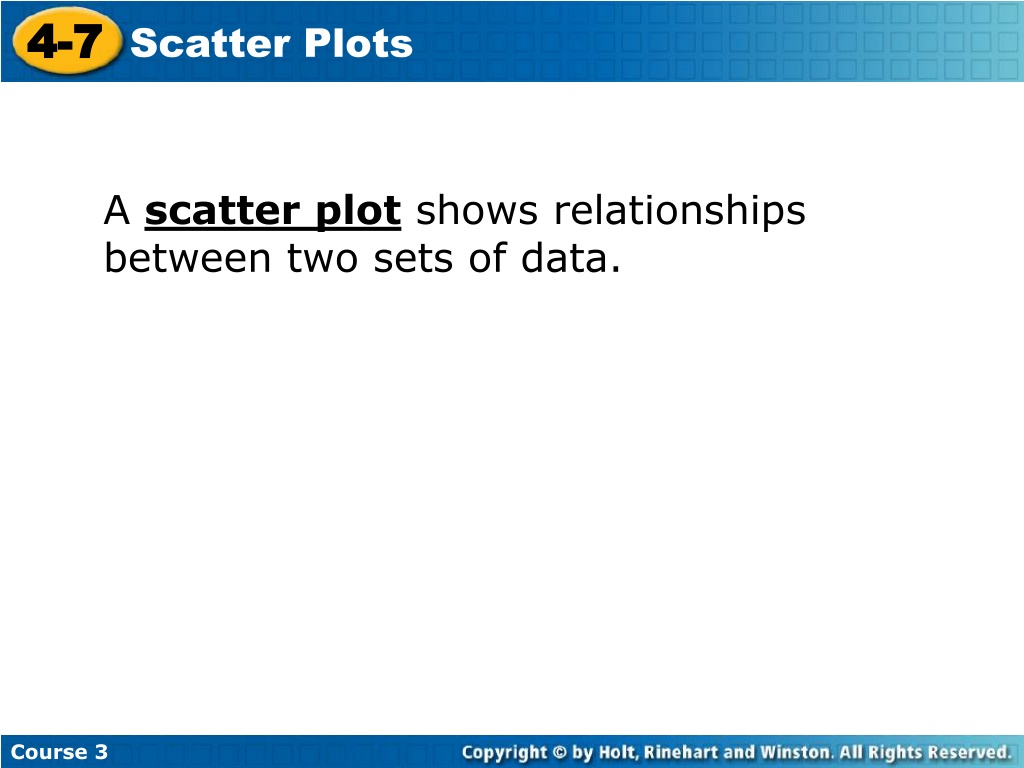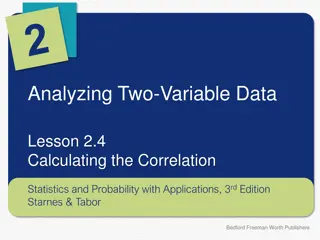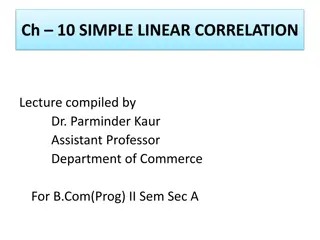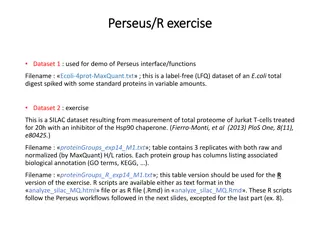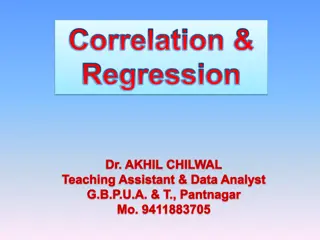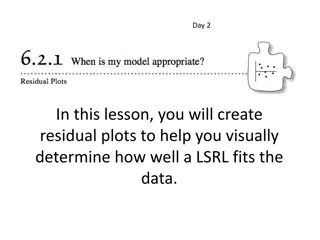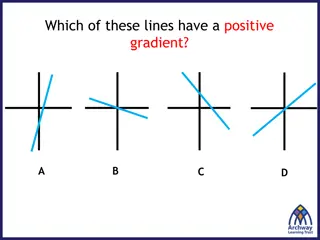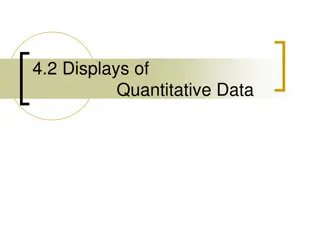Understanding Scatter Plots and Correlation in Data Analysis
Scatter plots display relationships between two sets of data, while correlation describes the type of relationship. The line of best fit in a scatter plot helps in visualizing patterns. Examples illustrate positive, negative, and no correlation scenarios. Learning to interpret scatter plots aids in data analysis.
Download Presentation

Please find below an Image/Link to download the presentation.
The content on the website is provided AS IS for your information and personal use only. It may not be sold, licensed, or shared on other websites without obtaining consent from the author. Download presentation by click this link. If you encounter any issues during the download, it is possible that the publisher has removed the file from their server.
E N D
Presentation Transcript
4 4- -7 7 Scatter Plots A scatter plot shows relationships between two sets of data. Course 3
4 4- -7 7 Scatter Plots Correlation describes the type of relationship between two data sets. The line of best fitis the line that comes closest to all the points on a scatter plot. One way to estimate the line of best fit is to lay a ruler s edge over the graph and adjust it until it looks closest to all the points. Course 3
4 4- -7 7 Scatter Plots No correlation; there is no relationship between the data (nonlinear). Negative correlation; as one data set increases, the other decreases (linear). Positive correlation; both data sets increase together (linear). Course 3
4 4- -7 7 Scatter Plots Additional Example 1: Making a Scatter Plot of a Data Set Use the given data to make a scatter plot of the weight and height of each member of a basketball team. The points on the scatter plot are (71, 170), (68, 160), (70, 175), (73, 180), and (74, 190). Course 3
4 4- -7 7 Scatter Plots Try This: Example 1 Use the given data to make a scatter plot of the weight and height of each member of a soccer team. Height (in) Weight (lbs) 200 63 125 190 67 156 180 Weight 69 175 170 68 135 160 150 62 120 140 The points on the scatter plot are (63, 125), (67, 156), (69, 175), (68, 135), and (62, 120). 130 120 60 61 62 63 64 65 66 67 68 69 Height Course 3
4 4- -7 7 Scatter Plots Example 1 Do the data sets have a positive, a negative, or no correlation?. The speed of a runner and the number of races she wins. Positive correlation: The faster the runner, the more races she will win. Course 3
4 4- -7 7 Scatter Plots Example 2 Do the data sets have a positive, a negative, or no correlation?. The size of a person and the number of fingers he has No correlation: A person generally has ten fingers regardless of their size. Course 3
4 4- -7 7 Scatter Plots Example 3 Do the data sets have a positive, a negative, or no correlation?. C. The size of a car or truck and the number of miles per gallon of gasoline it can travel. Negative correlation: The larger the car or truck, the fewer miles per gallon of gasoline it can travel. Course 3
4 4- -7 7 Scatter Plots Example 4 Do the data sets have a positive, a negative, or no correlation?. Your grade point average and the number of A s you receive. Positive correlation: The more A s you receive, the higher your grade point average. Course 3
4 4- -7 7 Scatter Plots Try This: Example 3 Use the data to predict how many circuit boards a worker will assemble in 10 hours. Hours Worked Circuit Board Assemblies 4 8 6 9 11 14 12 10 8 6 4 2 2 7 5 8 12 Hours According to the graph, a worker will assemble approximately 10 circuit boards in 10 hours. 2 4 6 8 10 12 14 Circuit Board Assemblies Course 3
Insert Lesson Title Here 4 4- -7 7 Scatter Plots Lesson Quiz: Part 1 1. Use the given information to make a scatter plot and name the type of plot. 11 10 9 Grading Period Number of A s 1 5 2 6 3 8 4 10 Number of A's 8 7 6 5 4 3 Positive - Linear 2 1 0 0 1 2 3 4 Grading Period Course 3
